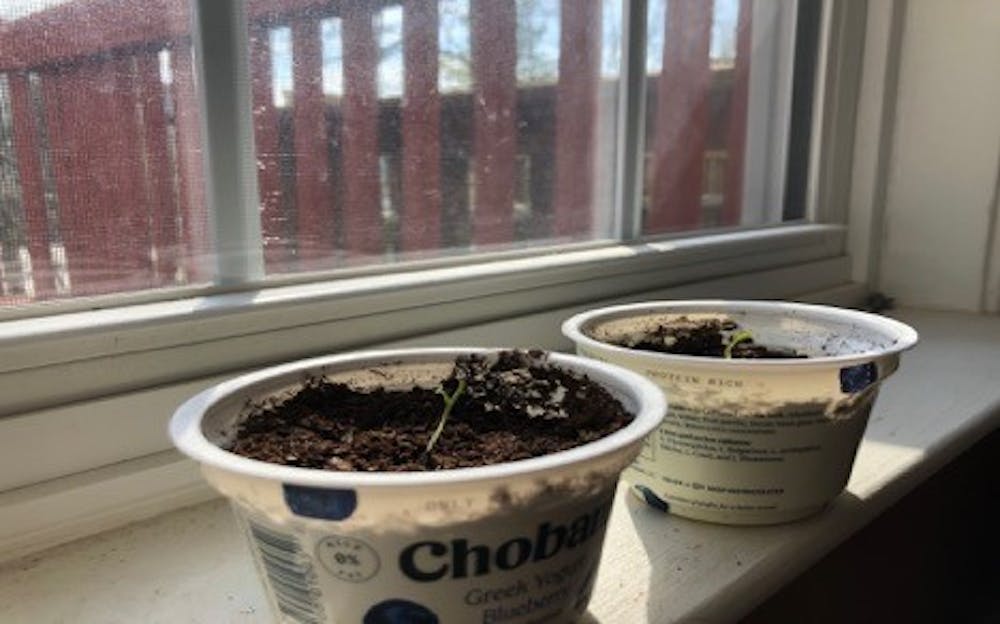In light of the transition to online classes and being back at home, it has been particularly hard to find a good excuse to leave my house to do anything. My drawn-out days involve a great deal of yawning in front of my laptop screen and trapping myself in a movie and YouTube wormhole. It is easy to get your head caught up with the negative vibes, especially with how our comfort of routine has suddenly turned upside down. However, it is also important to take initiative by establishing this as our new norm — once we do, we will finally have the ability to look beyond our angst-created shadows and see the opportunities that we can take to spread joy to others in little ways again.
The opportunity I have decided to take is starting a home gardening project. My goal is to grow fruits and vegetables in order to introduce sustainable eating practices in my very own home. I realize that I may not be the best fit for the job though. My planting resume would only include the very first and last seed I planted — a bean plant — in elementary school which was killed off quickly. My least favorite sound in the world is the squelch you hear when your shoes slide into mud, and any sight of a bug will make me conjure up a hundred ways to kill it. Meanwhile, I also claim to be passionate about sustainability and the well-being of our planet. A bit contradictory, isn’t it?
However, growing a vegetable garden has been on my bucket list ever since I read journalist Michael Pollan’s “The Omnivore’s Dilemma.” The book discusses the dangers of the corn industry, the rise of “industrial organic” and consumer relationships with food. The book connected the surplus of cheap corn and heavy food processing practices to socioeconomic obesity and petrochemical fertilizer runoff. It also asserted the idea that “industrial organic” is contradictory — for example, large corporations often do not use energy-efficient methods. Equipped with this new awareness, I felt encouraged to become my own “farmer” one day. Little did I know that I would take action a lot sooner than I expected.
First, I turned to the most college-friendly resource there is — YouTube. I felt bombarded with the amount of unfamiliar planting terminology and methods I needed to decipher. I learned that one needs to take into account the last frost date in their particular region, the long germination — the sprouting of the seed — period, the types of seed-starting soil and the many pests that could be creeping my way.
I decided to go with square foot farming, a popular planting practice in urban areas. It utilizes a raised bed system that allots a square foot to a plant or seedling, separated by wooden fence-like structures called beds. This system allows farmers to efficiently maximize their space to produce fruits, herbs and vegetables. After realizing that building homemade raised beds is less costly than buying them, I pored through online tutorials and gained a headache. I was overwhelmed by cedar planks, bags of potting soil and the actual constructing process.
I decided to push off the raised bed building for a month, so the wooden construction became the least of my worries — planting the seeds was a nuanced learning experience in itself. After purchasing seeds and seed-starting mix at Home Depot, I found out that different seeds call for different burying depths and that indoor plantlings must “harden off” for a week before being planted outdoors. This involves exposing my plantlings to the harsher environment outside by placing them outside for short periods of time and then gradually increasing the amount of time they stay outdoors. Currently, my seeds are nestled comfortably in their Chobani yogurt cups, germinating on top of the cable box which I found to be the warmest place in my house.
I hope my raised bed garden will eventually act as a symbolic structure to me. My garden epitomizes a transition to a sustainable lifestyle. This is a small step towards fulfilling my ecological wishes to decrease my carbon footprint by making less trips to grocery stores and buying less store-bought produce that was transported over long distances. Truthfully, living with an older generation that swears by frugality, convenience and Saran Wrap blinded me from the negative environmental impacts of cheap, disposable products that are factory-made. I think that overseeing this project will help broaden my focus away from surface-level expensive price tags. While prices are a vital pressure point, more expensive products also tend to accompany more sustainable quality and environmental benefits.
Additionally, my fruits and vegetables will hopefully symbolize my cultural background with the combination of seeds I plan to add to my garden. There are the common ones — bell peppers, cucumbers and tomatoes — but there will also be perilla leaves. These large, emerald-colored leaves are commonly prepared in Korean cuisine through pickling, marinating or simply being wrapped around a piece of Korean barbeque. Both the Asian and the American aspects of my identity will be represented and grown harmoniously in the physical entity that I have completely built myself. Every time I look upon the garden, I will be reminded of how these two identities often clash in reality and the hope that I will find common ground between them in the end.
The outcomes of the hopes and plans I have for this garden can only be seen once I let the future unfold. I may be overthinking and overplanning this entire matter, but I already imagine the end result as a bountiful yield, flashing vibrant colors of life and embodying my efforts. As I dotingly look upon my yogurt cup soon-to-be-seedings, I know that an adventure is awaiting me in the months to come.
Sarah Kim is a Life Columnist at The Cavalier Daily. She can be reached at life@cavalierdaily.com.







